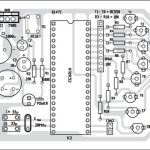We live in a world of networks and you surely must be using one right now (since you are reading this article on the Internet – one of the largest networks), but networks are not only about computers alone. Electric circuits also have networks and network theorems which govern their behaviour.
Introduction
Just as a computer network is a collection of computers connected in some fashion and able to exchange information, similarly an electric network consists of a number of branches or circuit elements which are combined together to form a unit for a specific purpose. A network could be either passive or active depending on whether a source of emf is present or not. There are a few theorems which govern the behaviour of electric networks and these are known as network theorems. We will take a look at one of the most fundamental network theorems in this article, namely the superposition theorem.
The Superposition Theorem
Before you study this theorem let me put it across to you that this is only applicable to linear networks. A linear network is one where the voltage and current are linearly related to each other as per the Ohm’s law. It does not work well with non-linear devices such as semiconductors and so on.
This theorem states that in a linear network where there is more than one source of emf present in the circuit, the resultant current in any branch is the algebraic sum of all the currents that would have existed if each of these emfs would have been present individually without the presence or influence of the remaining emfs. For the purposes of calculation of the individual affects of an emf, the other emfs are removed from the circuit but instead their internal resistances are kept as it is in the circuit.
Putting the same thing forward in a simpler language it can be said that the voltage or the current across a conductor in a circuit is the same as obtained by superimposing the voltage and currents due to each of the emfs individually. Hence this theorem could have been called the superimposition theorem as well instead of superposition theorem.
This theorem is very useful in calculating the values of voltages and currents across individual components when several sources of power are simultaneously present in the circuit and it is difficult by other means to calculate these parameters.



Comments are closed